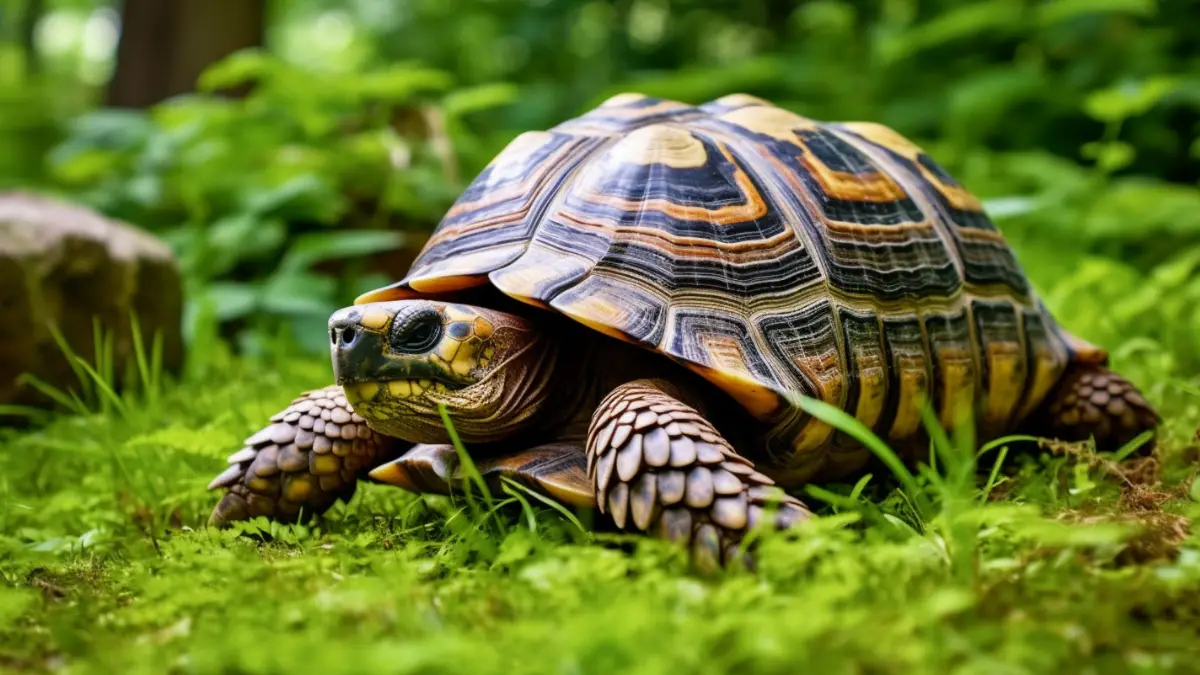Fat Tortoise: What To Do About It?
The serene tortoises may seem like no worries can touch them, but that’s not always the case. Like humans, their bodies stretch and they get fat, bringing more health complications.
So, regarding the fat tortoise: what to do about it? The major reason for tortoises getting obese is improper diet and lazing around. You have to make sure you give him just the right portion of food and provide him with more space. You can even add obstacles and challenges in their space for them to move around a bit.
So, here we will tell you all about their diet, what you should feed and avoid, and the conventional way to move them around more.
Table: Health Risks Associated with Obesity in Tortoise
Contents
Obesity doesn’t just change a tortoise’s aesthetic look but also brings serious health hazards with it. Below is a table of such health risks and their consequences.
| Health Risk | Consequences |
|---|---|
| Unhealthy shell | Misshapen shell due to excess weight |
| Hampers proper neck retraction process | |
| Respiratory Issue | Weight pressure may cause breathing issues |
| Organ Stress | Obesity causes more stress on the heart, joints, kidneys, liver, circulatory system |
| Risk of organ failure | |
| Reduced Lifespan | Greater chance of health complications and early death |
Fat Tortoise: What To Do About It?
If you see your tortoise getting fat or obese, you can follow us through the rest of the section and take action accordingly.
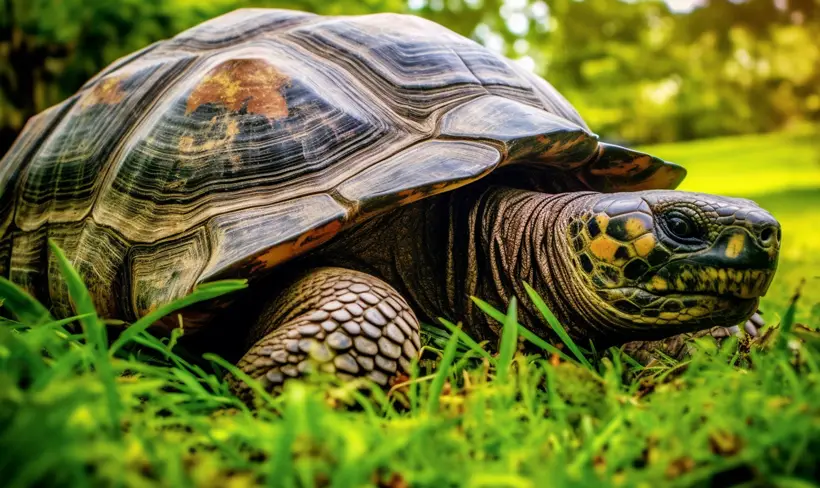
Dietary Change
Cutting down the excess food intake is the main thing you have to focus on here. But what is the right amount of food for a fat tortoise?
- Well, the food portion has to be just the size of your tortoise’s head. It is called the size of the head method.
- If your overweight tortoise is young or hatchling, you can feed it daily.
- For older Chelonians, one portion of a meal every other day will do.
- You should strictly avoid protein or carb-based foods for your pet.
- Treats are absolutely forbidden at this point.
Vegetables
Some species even consume 200 distinct species of vegetables. Vegetables should be your number one priority for your tortoise. However, you should not give veggies that contain phosphorus and have no nutritional value because they will cause respiratory issues. Such as:
- Cucumbers
- Mushrooms
- Eggplants
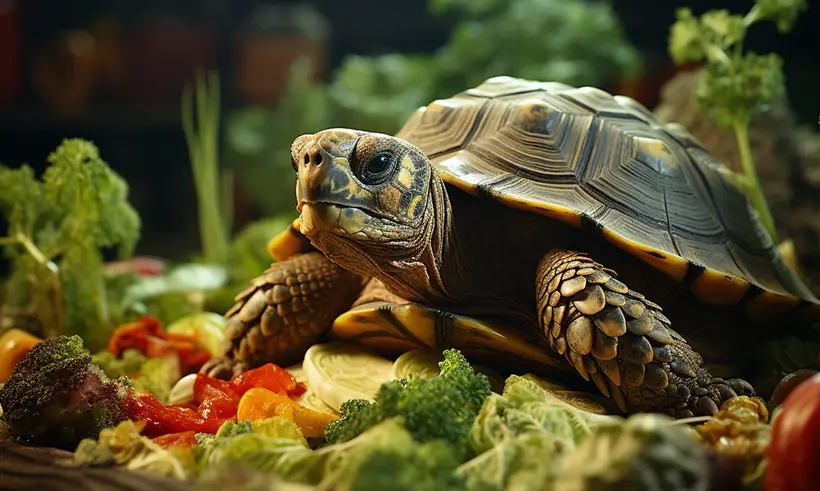
Instead, you can go for these options:
- Tomatoes
- Pumpkin
- Beets
- Carrots
- Corn
- Broccoli
- Sweet potatoes
- Squash
- Green beans
- Colliflower
- Asparagus
Fruits
Fruits are another good food source for tortoises. However, they cannot eat most fruits. It’s because many fruits contain high amounts of citric acid and phosphorus. High phosphorus indicates kidney problems and citric acid can cause stomach issues.
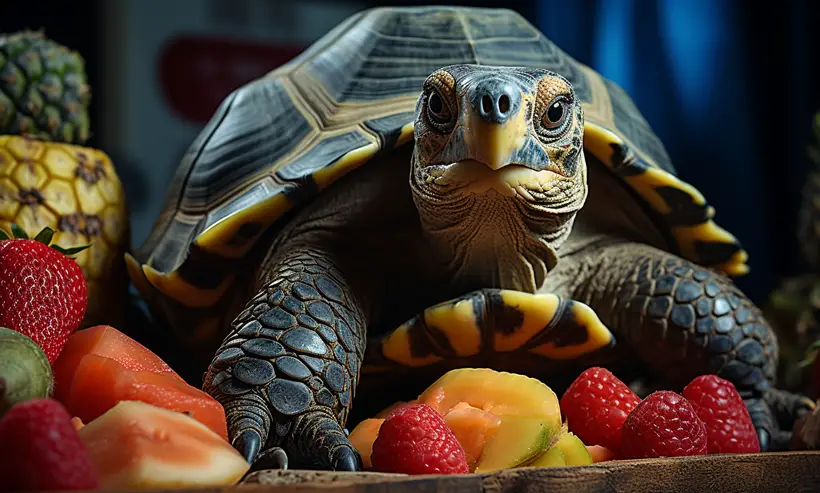
These are the fruits you can feed your fat tortoise:
- Apple
- Pear
- Papaya
- Plum
- Plum
- Melon
- A small portion of Kiwi on special occasion
Leaves
In the wild, tortoises mostly live on different kinds of leaves. So, they won’t consume just about any random leaf.
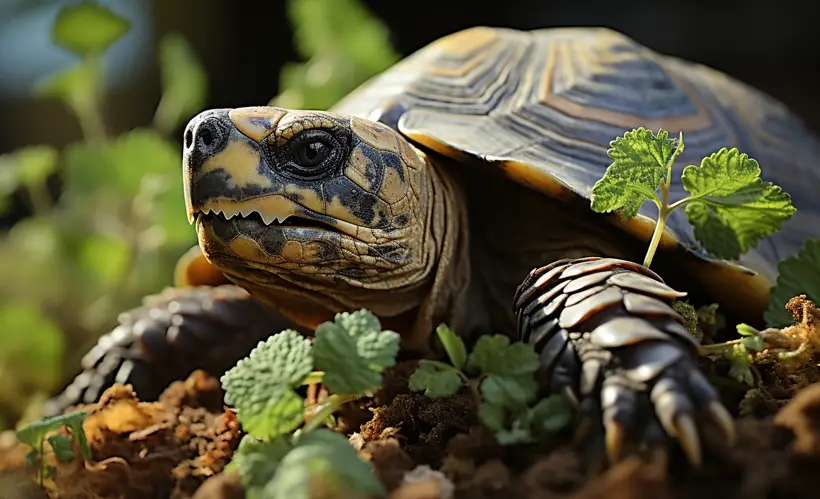
Generally, they prefer:
- Grass
- Succulent leaf
- Holly
- Ficus
- Asparagus Fern
- Begonia
- Amaryllis
- Daffodil
- Calla Lily
- Crowfoot
- Azalea
- Boxwood
- Juniper
- Azalea
- Poinsettia
Enriched Environment
Tortoises generally don’t do much moving around. However, in the wild, they have to dig and walk around in search of food. But in your home, you provide your tortoise foods without any effort from them. They don’t get that much opportunity to scavenge.
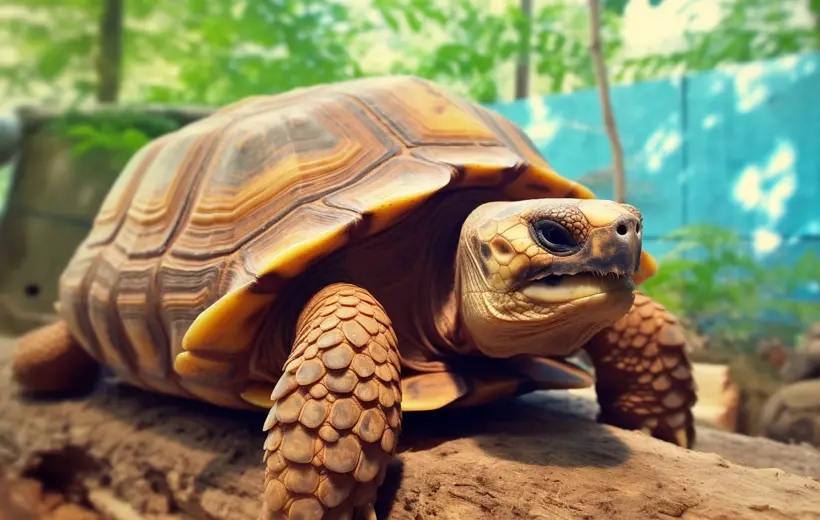
So, what you can do here is make its surroundings such that they can stay active and relate to its environment. Thus, you can create slopes, ramps, or even different hiding spots in the glass cage. Artificial plants and toys can also help your tortoise to feel its surroundings.
When they walk on those uneven surfaces regularly, it helps them to shred extra calories. However, you can’t make them exercise like other animals.
Consulting The Specialist
Lastly, obesity is dangerous for your tortoise. That is why you need to frequently monitor your pet tort. So, when you feel like your tortoise is getting obese, you should certainly consult with a vet.
The veterinarian will thoroughly examine your pet and find out the actual cause. They may even advise you to subtract calories from their foods.
Similarly, the experts might also discover any health complications your tortoise might face due to obesity. So, never neglect to check up with a veterinarian.
How to Distinguish Obese Tortoise from a Growing Tortoise?
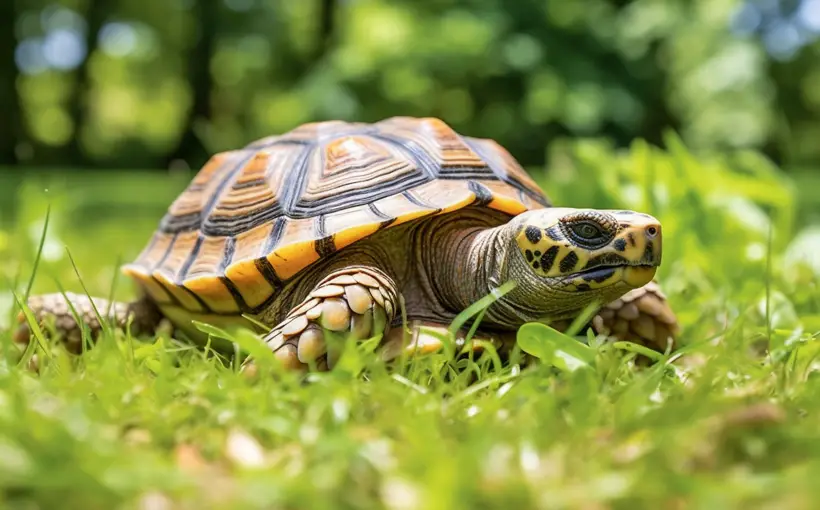
People often have a hard time distinguishing if the tortoise is growing or getting fat. It is hard to tell it apart if the tortoise is young. With this table, you will be able to tell them apart:
| Aspect | Obese Tortoise | Growing Tortoise |
|---|---|---|
| Physical Appearance | Round, bulging shell | Smooth, well-proportioned shell |
| Activity Level | Sluggish, limited movement | Energetic, active behavior |
| Eating Habits | Overeats may hoard food | Eats consistently, maintains balance |
| Exercise | Lacks exercise, slow mobility | Engages in exploratory activities |
| Shell and Body Development | Shell might be misshapen | Shell forms and grows naturally |
| Mood | Stays in a constant bad mood | Stays in a good mood |
| Skin | The skin forms folds | Has a healthy skin |
FAQs
There are many things you still want to know to help your fat tortoise. You will find answers to your queries here:
No. It is not a symptom of obesity if your turtle gets bloated suddenly. Rather, it could be due to renal or kidney dysfunction. But if the bloating occurs gradually, it is a sign of obesity.
Yes, in fact, you shouldn’t feed your adult tortoise every day. If your tortoise is a hatchling or young, you can feed it once every day for proper nutrition. However, for adults, you should maintain at least a 24-hour gap. Or else it may cause constipation.
It is true that diet is a major part of weight loss, but it alone can’t do much. You have to make sure you create an environment where your tort can move sound. Without that, it will take a long time for your tortoise to shed the stored fat.
Conclusion
Tortoises don’t become obese in a day. The process takes days and weeks. If you keep an eye on their limbs and daily activities, you can easily identify the changes as soon as they occur. Even if they do get fat, you can help them.
Make your fat tortoise eat fewer calories and make sure they walk around a bit more. However, you should consult your vet before making any dietary change. With that being said, take care of your pet’s well-being, and don’t neglect it on your own!

